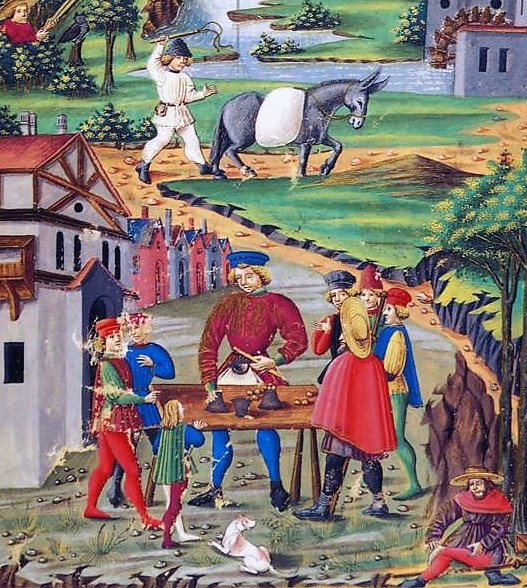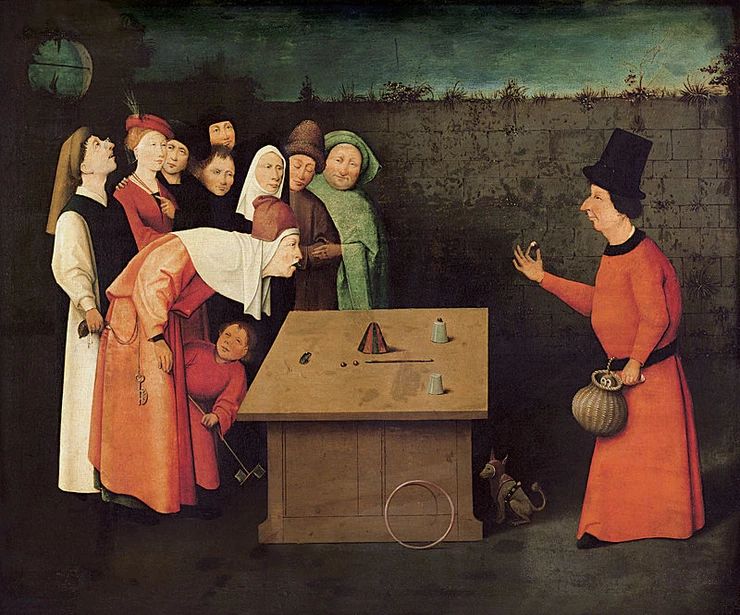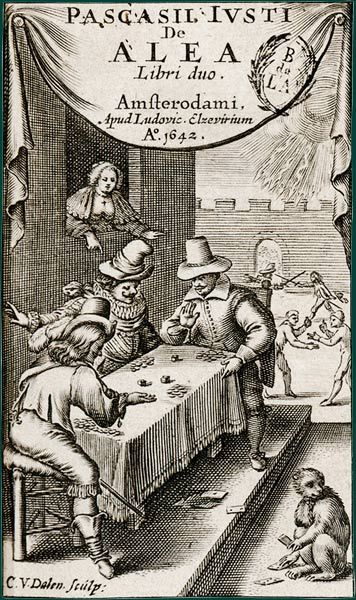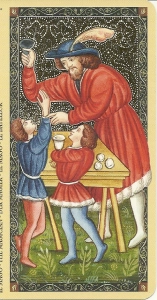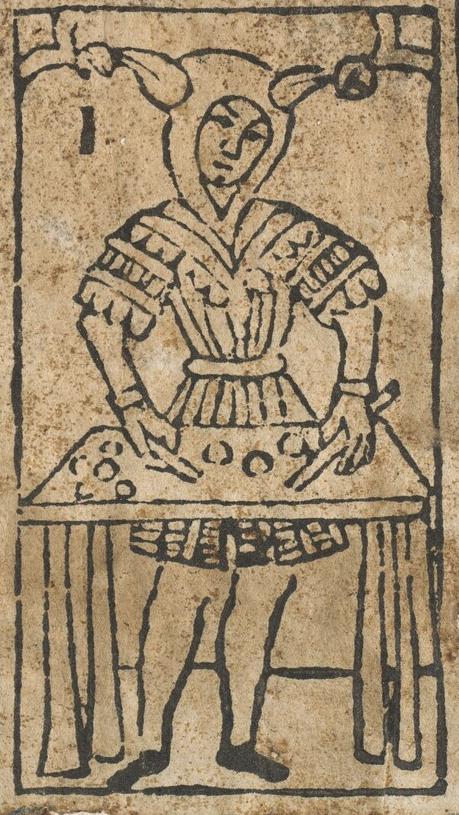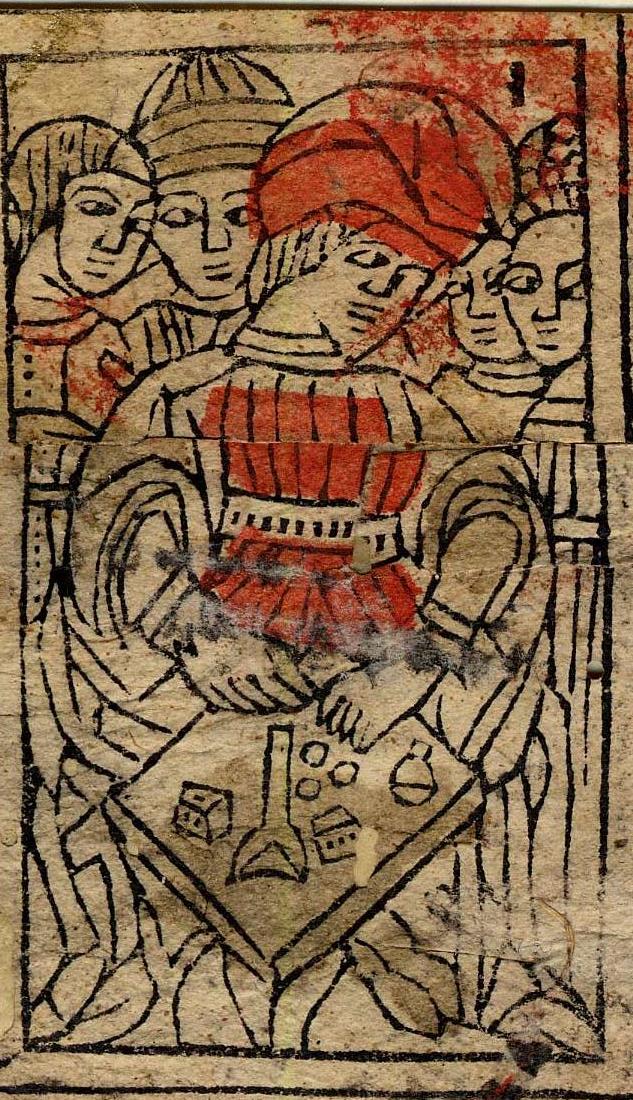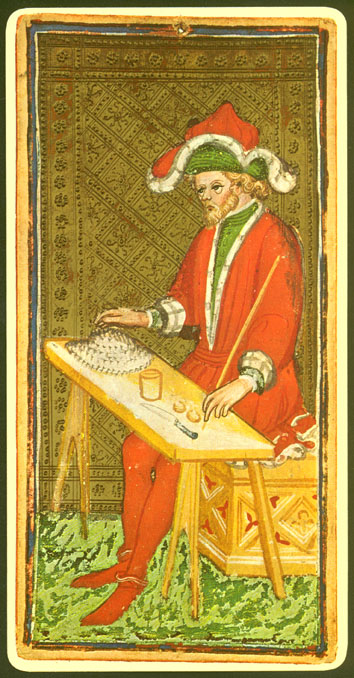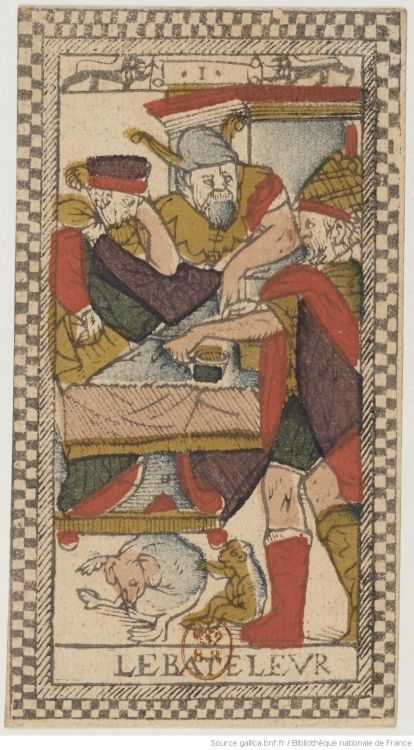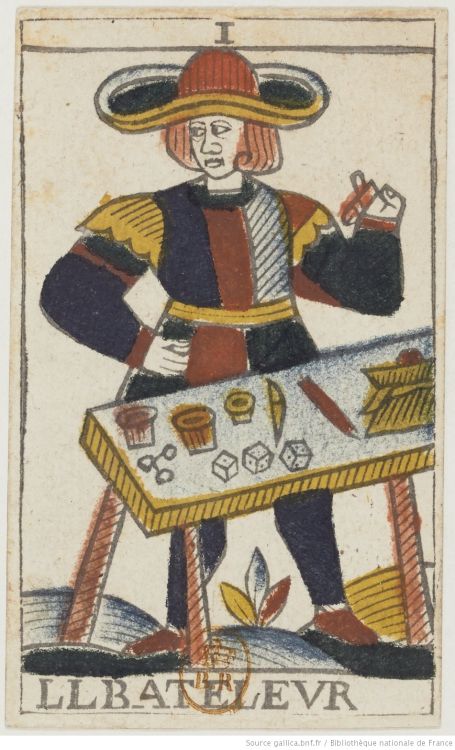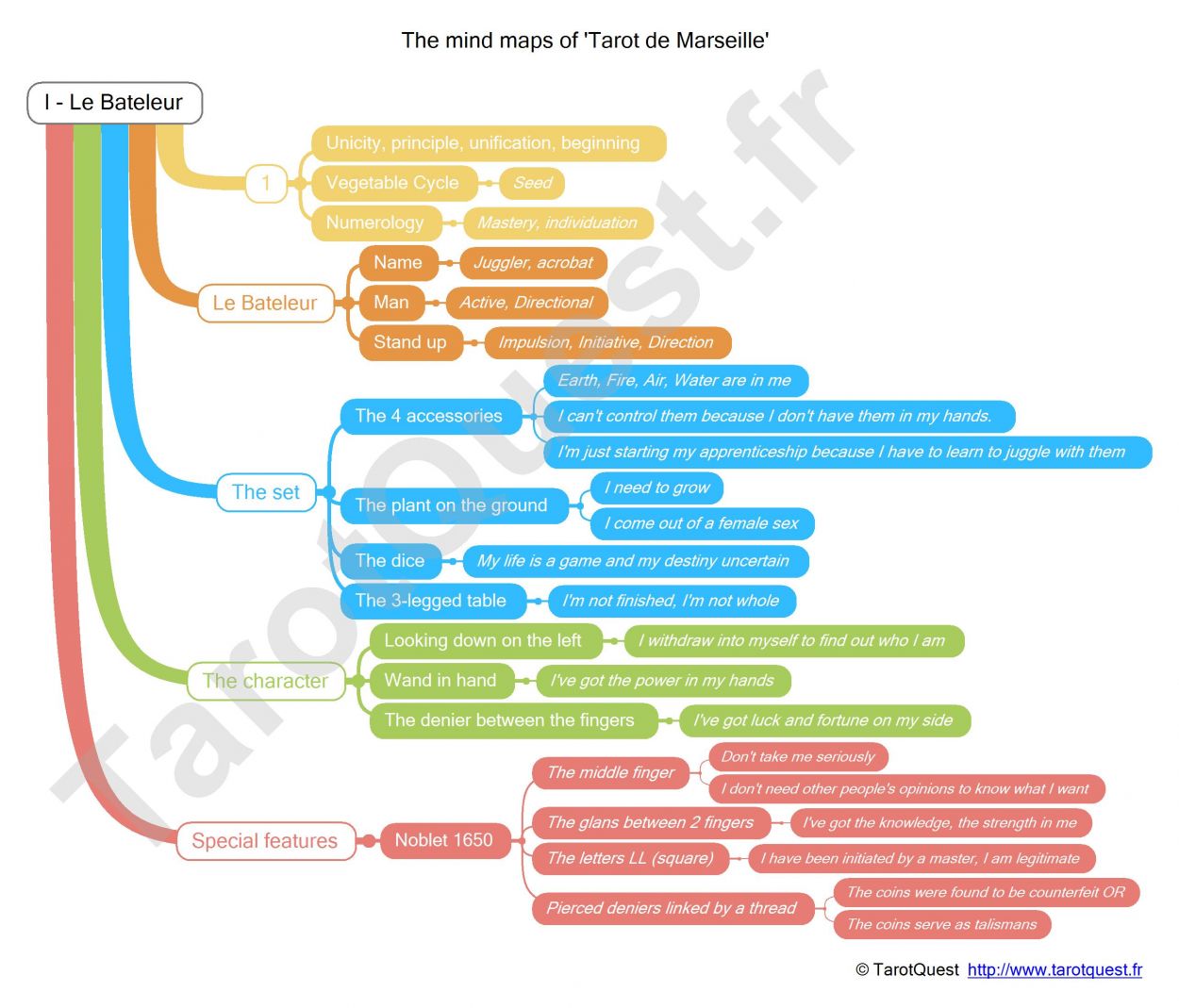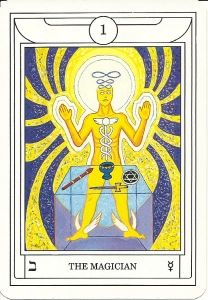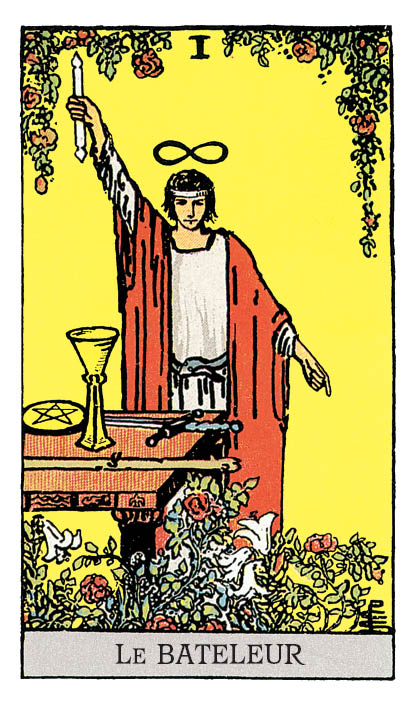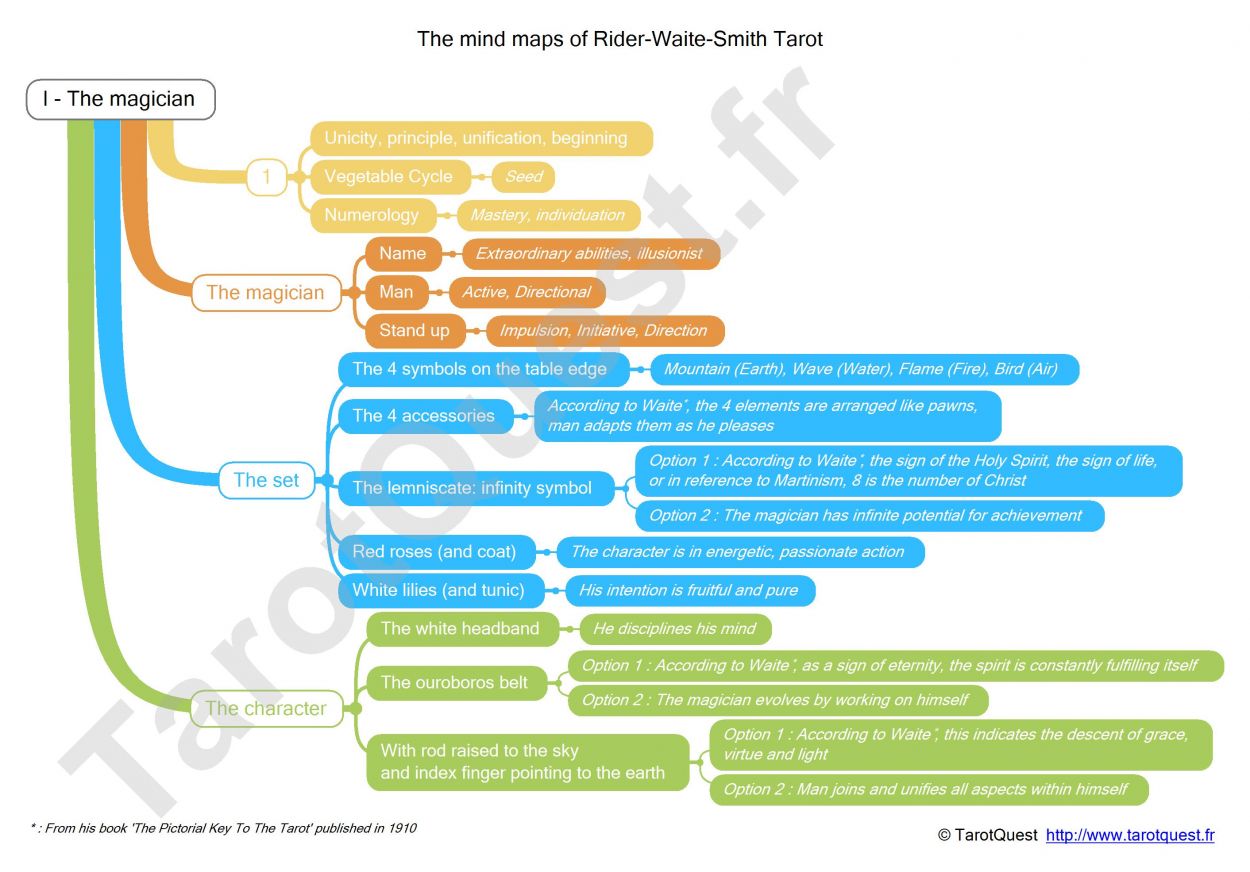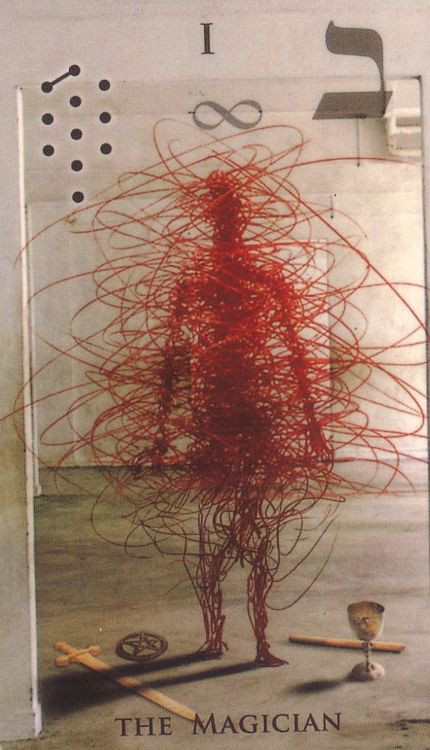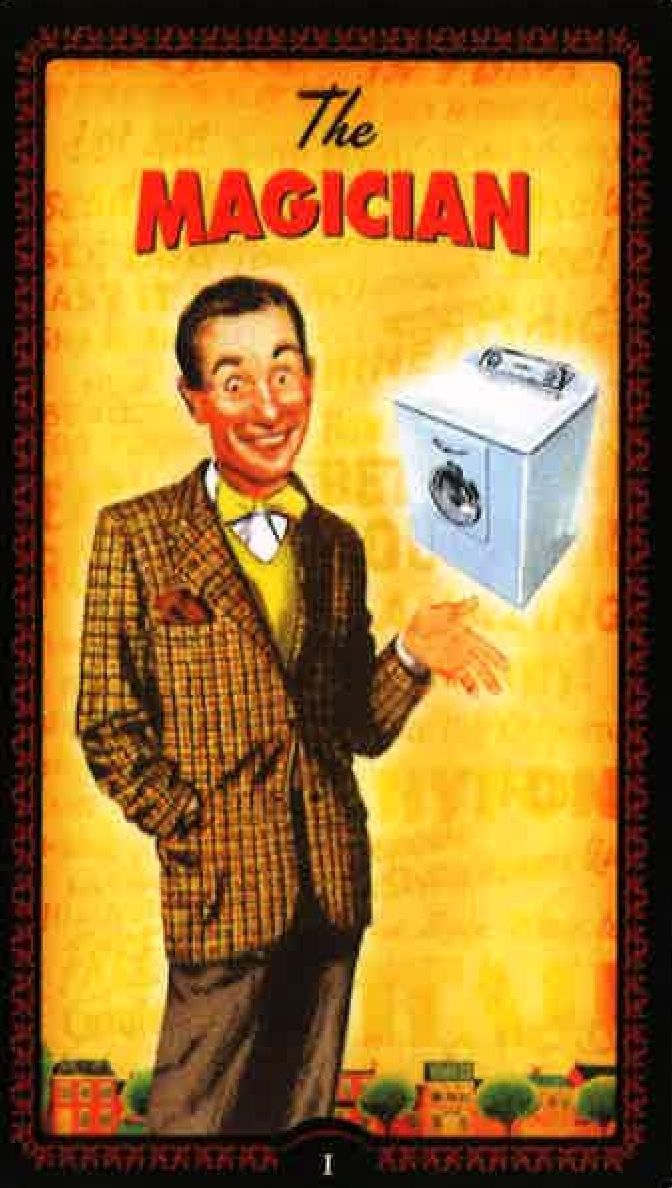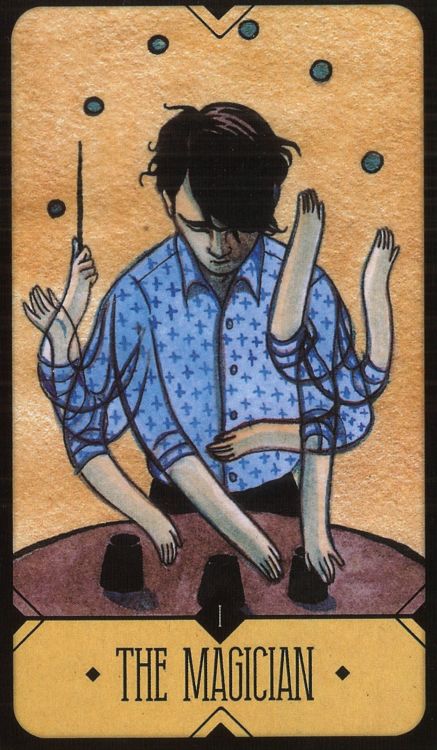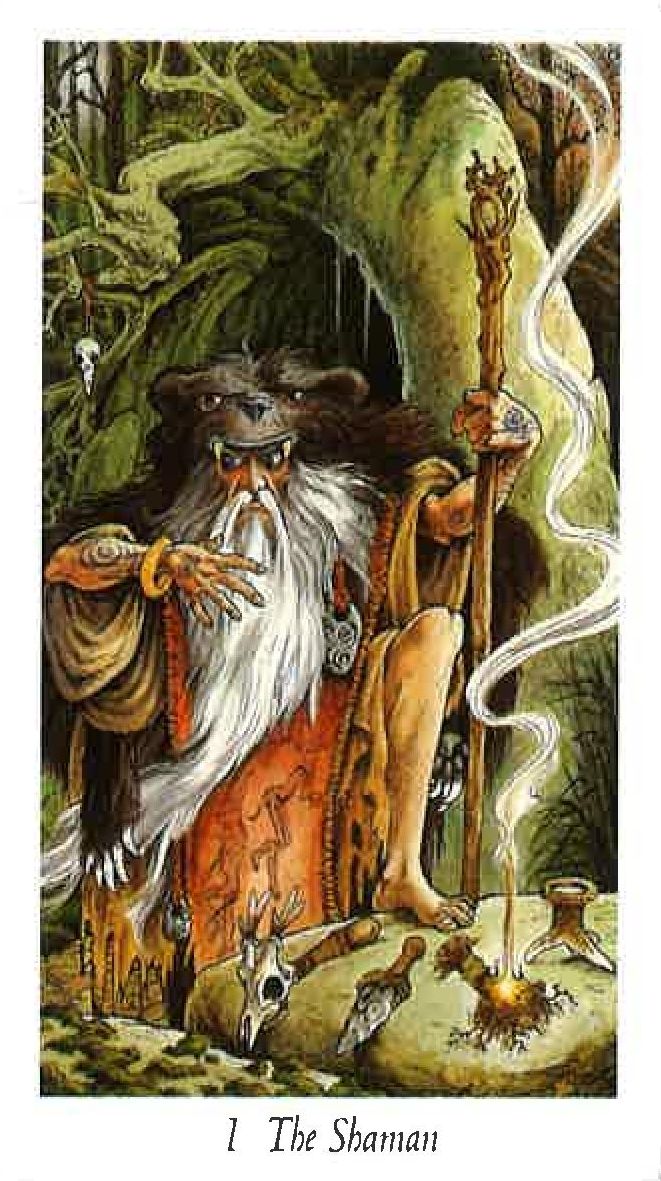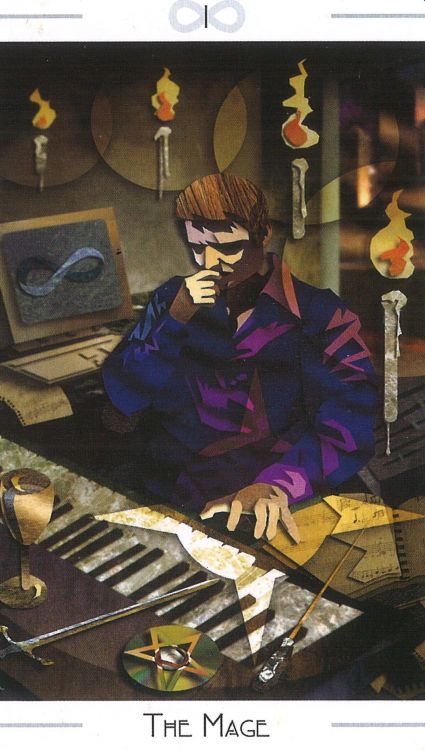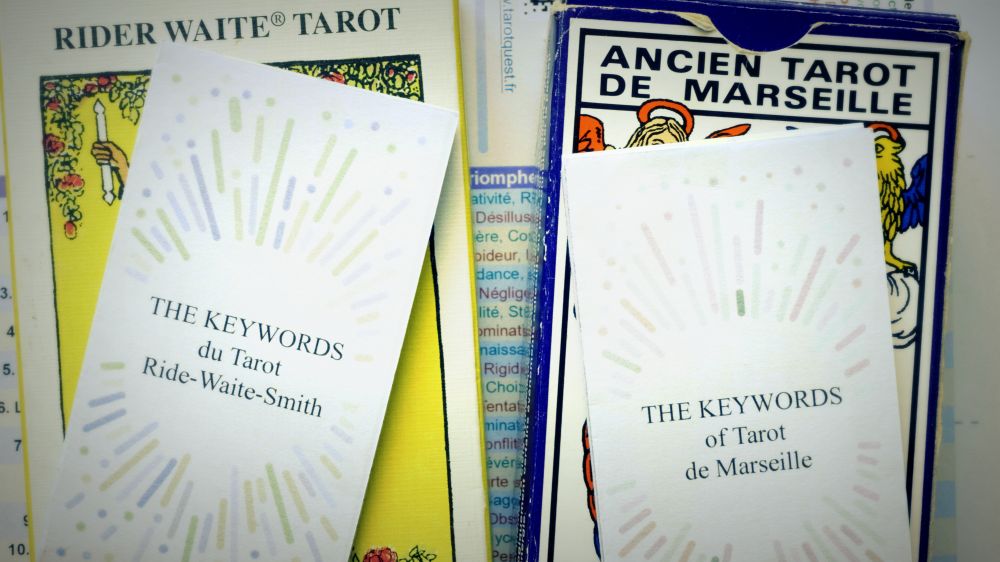The Magician is not a magician! He doesn't do magic, he is a conjurer, in clear terms: he is a person who, through his skill, manipulations, tricks, produces magical illusions by making objects disappear, appear, change place or aspect. We could say of him that he is a juggler or an illusionist. First, producing illusions is not what French master craftsmen of the Renaissance retained. These scholars first wanted to show at the first stage of the spiritual journey, that this adventure was addressed to everyone, because the Magician comes from the common people, he is even rather poor. The Magician is a wanderer by nature, a perfect social role to suggest the idea of journey. Finally the Magician shows great agility, and it takes that to learn to master the 4 Elements. So here are the 3 essential aspects of the juggler's trade that master craftsmen retained. He is not a magician, in the sense that he has no magical power, he does not perform miracles, even making illusions goes beyond the initial concepts of the card. He is not a magician, because he is not part of an elite, he has received no secret knowledge. Worse than that, he still has many things to learn, while the title of magician implies that he has acquired mastery of his art. His goal is not to link or connect Earth and Heaven as his gesture shows on the R-W-S card. No, his goal is to become himself, to become One, to find his place in the world, as the last card of the journey shows so well: The World.
Many Tarot enthusiasts see in the wavy shape of the Magician's hat a disguised lemniscate, that is the infinity symbol. I must demystify this fantasy and return to the reality of the time. There were among French master craftsmen, great scholars, Jean Noblet was one. Jean Dodal also transmitted subtleties, and a quite striking personal interpretation in his tarot. But Jacques Viéville, contemporary of Jean Noblet, engraves his tarot with many French mistakes. The French Academy was founded in 1634 with the initial objective of unifying spelling and grammatical rules of the French language. If 16 years after the creation of the academy, Jean Noblet shows real mastery of "canonized" French, Jacques Viéville still writes in approximate French. Moreover, the engraving of his tarot is less precise and qualitative than that of Noblet. In short, French master craftsmen were for some scholars but most were above all craftsmen without great education apart from learning their craft know-how. And from the beginning of the 18th century, that is very quickly after the "standardization" of the French tarot tradition (which will become Tarot called "of Marseille" much later), craftsman master craftsmen will give way to merchant master craftsmen, buying molds or having them reproduced identically. From the beginning of the 18th century, tarot of French tradition is no longer a playing card deck with a spiritual message, it has become a playing card deck, period, that is sold by thousands for export, in short it has become merchandise.
In this context, only master craftsmen like Jean Noblet or Jean Dodal could have placed a lemniscate on the Magician card. And if they had done it, they would not have discreetly hidden it in the man's hat. First because the target of these master craftsmen was the "real" people, the "common" people, mostly illiterate or unable to read, not knowing the infinity symbol. And Noblet or Dodal, when they have something to say, they say it clearly: the LL of Noblet's Magician is not a mistake, but the clear meaning that he was initiated by his master. Similarly Dodal puts a '4' on The Emperor card, to signify that he too was initiated by his master. So if Noblet and Dodal had wanted to put the infinity symbol, they would have engraved it as such. In short, seeing a lemniscate in the Magician's hat is a pure fantasy of modern times.
Come on, let's forget the initial perspective of French master craftsmen. Was Waite right to ask Pamela Smith to draw the infinity symbol above the magician's head? Waite writes in his book 'The Pictorial Key To The Tarot' that the lemniscate is the sign of the Holy Spirit, the sign of life, or again in reference to Martinism, 8 is the number of Christ. Well we must face the evidence, the day Waite wrote these words, he had really smoked or maybe simply drunk... I will stick to the usual interpretation I read: "The lemniscate evokes that the magician has infinite potential for realization" or "The lemniscate evokes that the magician has potential for infinite realization". Well already, that's more convincing. Yes, indeed, through this card we talk about "potential" indeed. But what is an "infinite potential" or an "infinite realization"? Because there, concretely, we're talking about simply finding one's place in the world, not climbing to Heaven or joining the beyond. Where is the infinite?
I'm going to be direct: simplify your life in understanding this card, forget the infinity symbol!

